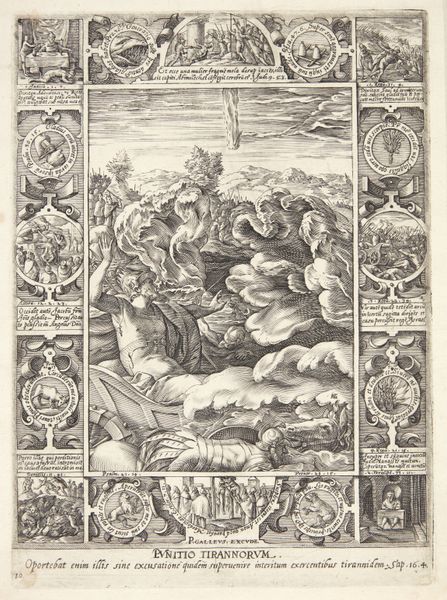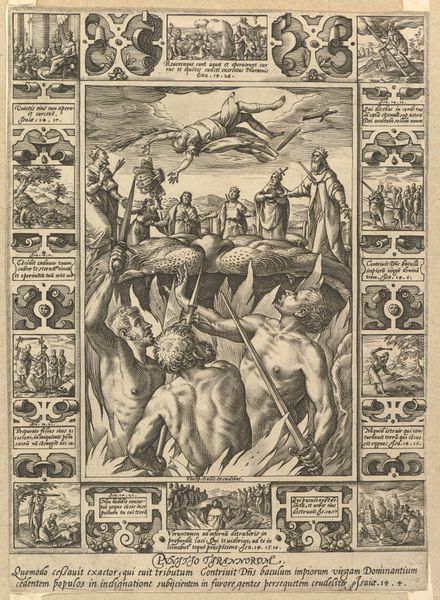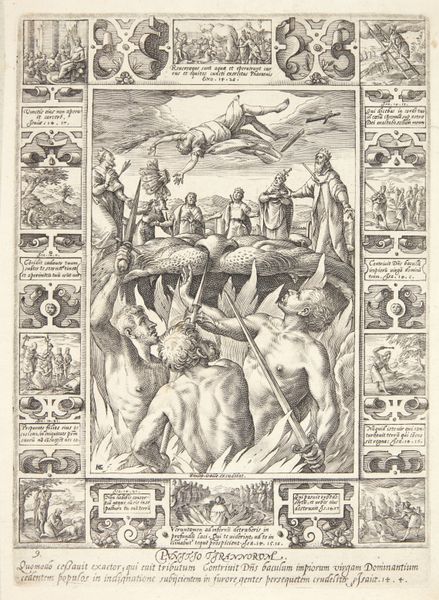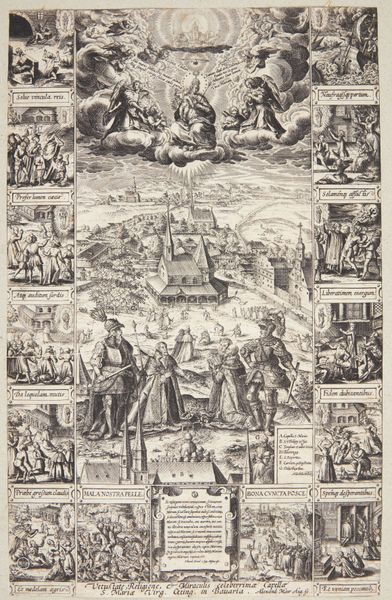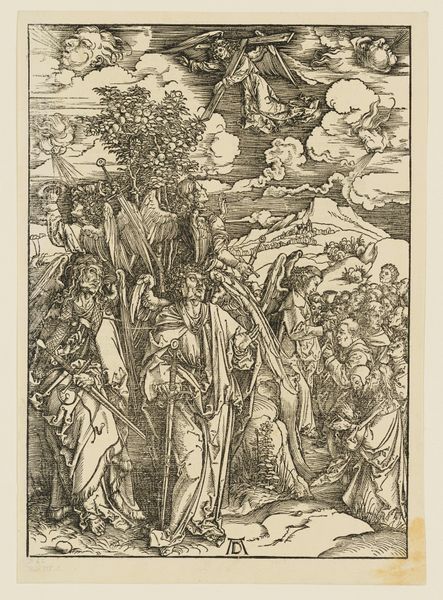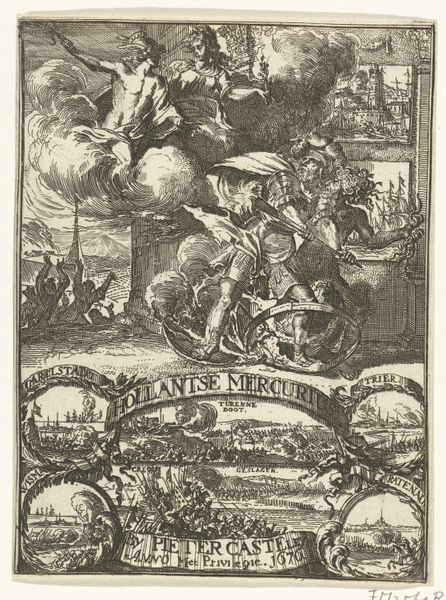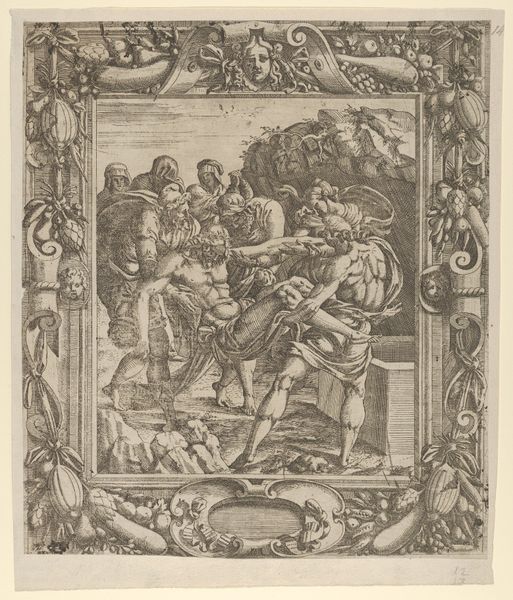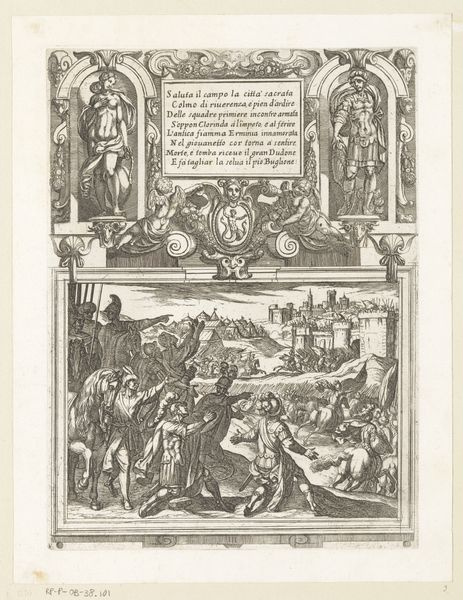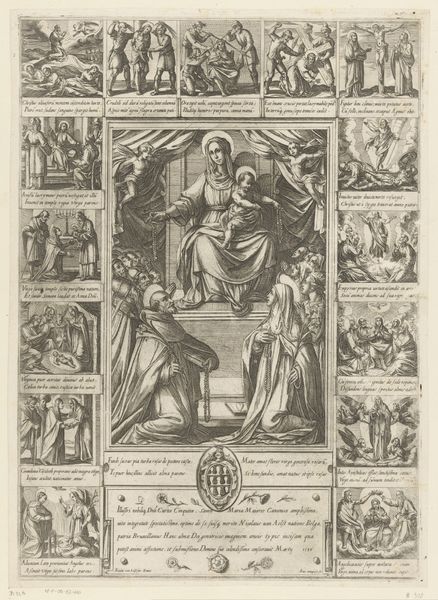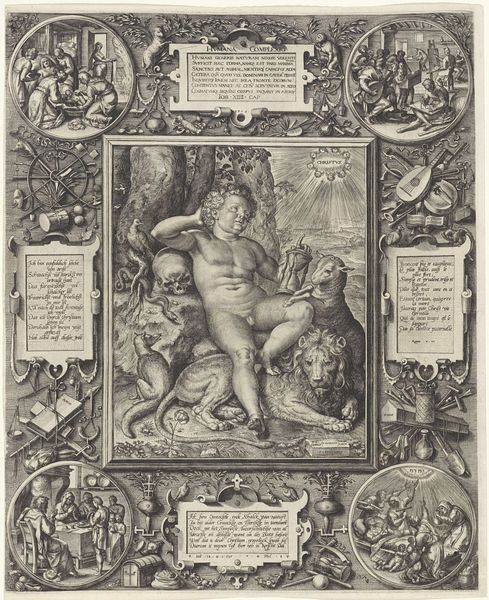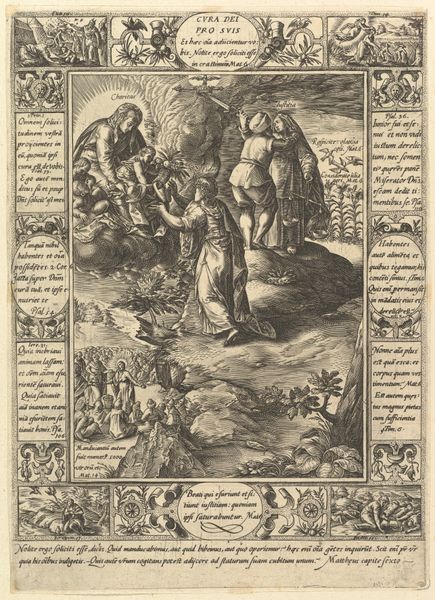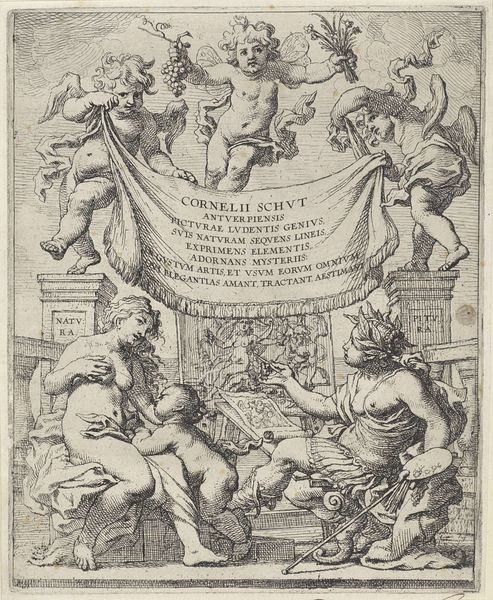
Punitio Tirannorum, from "Allegories of the Christian Faith, from Christian and Profane Allegories" 1570 - 1617
0:00
0:00
drawing, print, engraving
#
drawing
#
allegory
#
pen drawing
#
animal
# print
#
landscape
#
figuration
#
soldier
#
history-painting
#
northern-renaissance
#
engraving
Dimensions: sheet: 10 3/16 x 7 7/16 in. (25.8 x 18.9 cm) mount: 14 1/16 x 10 1/8 in. (35.7 x 25.7 cm)
Copyright: Public Domain
Curator: Looking at this dramatic scene, my first impression is one of turmoil and upheaval. The turbulent clouds and the central figure being tossed about give it a very chaotic feeling. Editor: Indeed. We are looking at “Punitio Tirannorum,” or "The Punishment of Tyrants", by Hendrick Goltzius, likely created sometime between 1570 and 1617. It’s an engraving, currently held at the Metropolitan Museum of Art. What draws me is the clear socio-political critique being offered here through allegory. Curator: The image certainly presents a vivid depiction of divine retribution. We see the tyrant overthrown, but there’s a symbolic language being spoken here. Editor: Precisely. Tyrants, historically and today, cling to power, but this work boldly suggests that abuse is never sustainable and inevitably collapses. Consider the classical notion of the "wheel of fortune," where fortune raises a figure to the apex, then violently hurls them down. Is Goltzius illustrating such a cycle? The tyrant here, cast down amid battle and ruin, reminds us of that universal fate. Curator: I see the broader scope. And look at the smaller scenes in the border. Each vignette reinforces this idea of justice being delivered. It’s a visual reinforcement, a cultural memory of past tyrants meeting their end. Even the animals incorporated feel allegorical, adding layers to our understanding. Editor: The use of the animal further underscores this historical power struggle as well as how this allegory functions, revealing much about perceptions of good and evil that Goltzius and his audiences found recognizable and sensible. What appears natural to one culture—or social stratum within a culture—can be an outrage to another. This composition allows us to contemplate this as both a historic and contemporary theme. Curator: Looking closer, I’m struck by how Goltzius managed to pack so much symbolism and narrative into one piece. Editor: This definitely encourages us to reconsider, doesn't it, how persistent themes of power, justice, and moral downfall show up in art throughout history. It's about cyclical patterns, not isolated incidents. Curator: Agreed. Goltzius gives us much to reflect on—the patterns within, the historical reminders, and what it suggests about cultural expectations around leadership and abuse of power. Editor: Absolutely, it provokes introspection and makes clear how powerfully art speaks, both within and far beyond, its own historical moment.
Comments
No comments
Be the first to comment and join the conversation on the ultimate creative platform.
